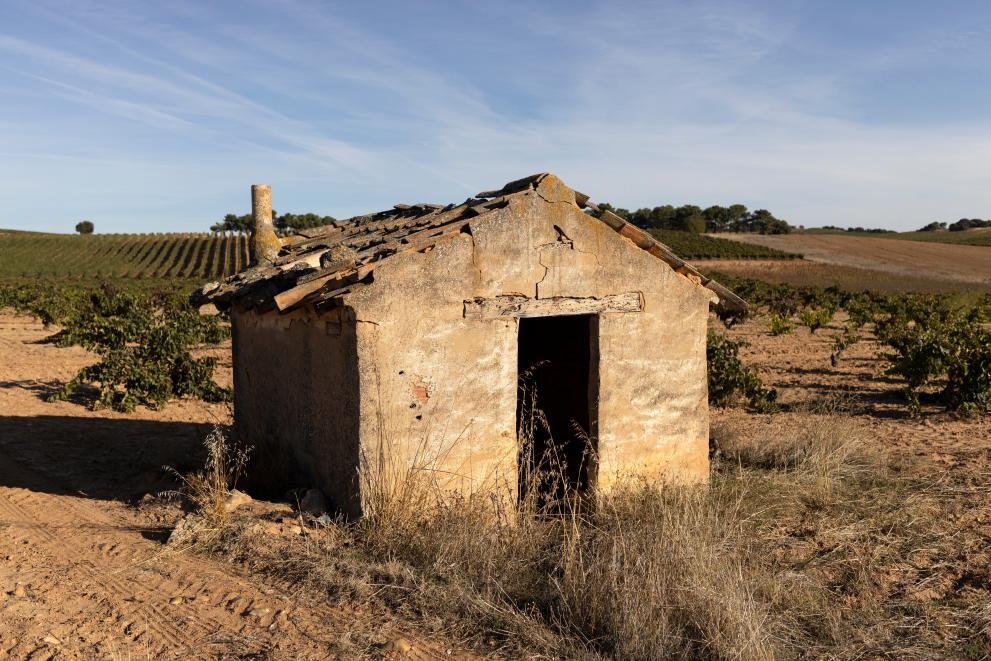
This study used comprehensive sets of images, from 1957 and 2007, to evaluate transitions of land use and land cover over that time span in the Valencia region, eastern Spain. The researchers report strong trends towards the establishment of woodland and scrubland, but minimal transition between the two.
Several areas of Mediterranean Europe have experienced widespread abandonment of rural agricultural areas over recent decades. In eastern Spain, this has been accompanied by an increase in wildfires often attributed to climate change but also driven by increased flammable biomass from the establishment of natural vegetation in abandoned areas. This study aimed to provide a more detailed understanding of the dynamics of land-cover change to support the development of policy responses to these ongoing demographic and environmental shifts.
The study covered the entire province of Castelló (6 632 square kilometres) in the Valencia region. The province experienced substantial population movement from the rural interior towards cities and coastal areas over the second half of the twentieth century, with agricultural activities accounting for 42.5% of the workforce and contributing 29% of GDP in 1960 – compared to 3.7% of the workforce and 2.9% of GDP in 2002.
The study utilised two sets of aerial photographs of the whole province, the first taken in 1957 by the US Army Map Service and the second in 2007 by the Spanish National Orthophoto Program. The researchers sampled both sets of images using an array of 1-hectare plots at a density of one per kilometre. They classified each plot, at each time, by land use as urban, agricultural, abandoned agriculture, forest or other (including wetlands, quarries and beaches). They then provided a general classification of forest plots by land cover into woodland, scrubland and natural grassland (including deforested rocky outcrops)1. The data was then analysed to determine transitions between classes in each plot over the 50-year period and to identify systematic transitions between specific classes. The researchers considered a transition from one land class to another as ‘systematic’ if this occurred with a disproportionally high frequency relative to transitions to other land classes.
The results indicated a substantial reduction in agricultural land use, say the researchers, falling from 44% of plots in 1957 to 20% of plots in 2007, with abandoned agriculture rising from 8% of plots in 1957 to 21% in 2007. Grassland areas declined, they say, from 30% to 25%, while the proportion of dense forest (woodland and scrubland) increased – from 12% to 21% for woodland and from 5% to 8% for scrubland.
There was a strong systematic trend for agricultural land to become abandoned and for abandoned agricultural land to evolve into dense forest, according to the researchers. However, they say that there was a systematic trend against agricultural categories transitioning to grassland. They report that although there were systematic trends in both directions for transition between grassland and woodland or scrubland, there was no systematic trend for transition between woodlands and scrublands. They also note that there was a strong trend against transitions away from forest to non-forest land uses.
The researchers highlight the evolution towards dense forest due to a combination of socioeconomic (abandonment of farmland) and ecological factors. The lack of systematic transition between woodland and scrubland indicates that these are separate successional paths (i.e. the process of change in vegetation structure), they argue, rather than consecutive steps in a linear succession as has previously been suggested. They suggest that the observed trend for woodland and scrubland to transition to grassland (the reverse of natural ecological succession) is probably due to wildfire in most cases.
The researchers argue that a robust understanding of land-use and land-cover changes will be increasingly important for managing abandoned agricultural areas in this province and other areas of Mediterranean Europe. They say that this information is critical for determining policies on sustainable management, risk mitigation, CO2 storage and climate-change adaptation. They highlight the socioeconomic significance of forestry activities and the consequences of different forest-management regimes as priority areas for future research.
Footnotes:
- These three categories of forest types were distinguished by their vegetation structure – woodlands and scrublands are densely vegetated and therefore referred to as ‘dense forest covers’, while rocky outcrops are a deforested cover, comprising mainly of herbaceous and limited vegetation.
Source:
Delgado-Artés, R., Garófano-Gómez, V., Oliver-Villanueva, J.-V. and Rojas-Briales, E. (2022) Land use/cover change analysis in the Mediterranean region: a regional case study of forest evolution in Castelló (Spain) over 50 years. Land Use Policy 114: 105967.
To cite this article/service:
“Science for Environment Policy”: European Commission DG Environment News Alert Service, edited by the Science Communication Unit, The University of the West of England, Bristol.
Notes on content:
The contents and views included in Science for Environment Policy are based on independent, peer reviewed research and do not necessarily reflect the position of the European Commission. Please note that this article is a summary of only one study. Other studies may come to other conclusions.
Details
- Publication date
- 5 October 2022
- Author
- Directorate-General for Environment

